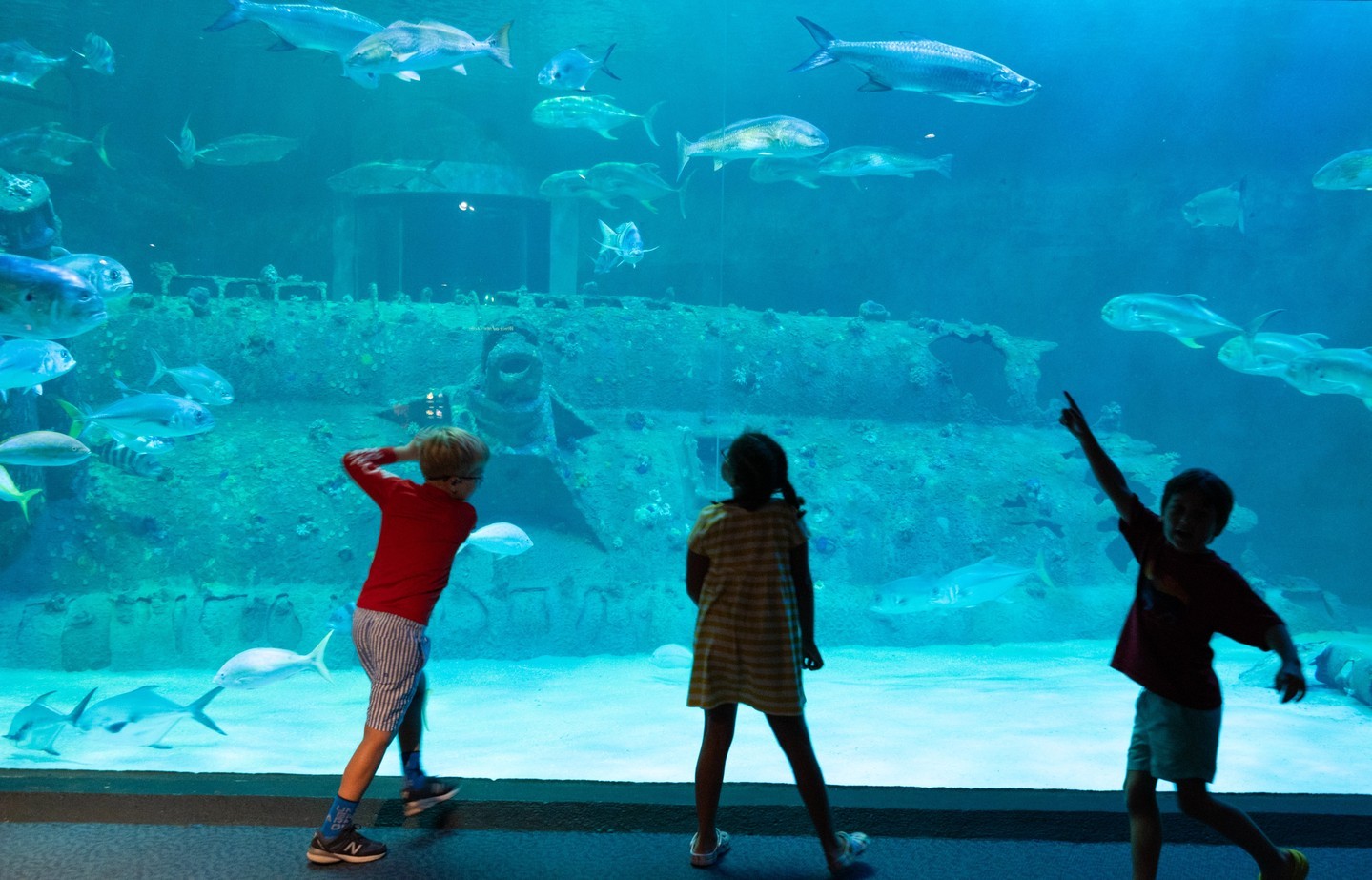- Understanding the significance of water volume in aquarium habitats.
- The biological and ecological diversity of the major aquarium habitats.
- The role of zoos and aquariums in wildlife conservation.
- Importance of aquatic habitats in education and public awareness.
- Challenges and strategies in maintaining large-scale aquatic exhibits.
Aquariums play a crucial role in the conservation and education sectors of wildlife preservation. Hosting over 430,000 gallons of water distributed among saltwater and freshwater habitats, they provide a controlled yet diversified environment for aquatic life. These habitats not only represent significant ecosystems but also serve educational and conservational objectives.
Aquariums are more than just a visual spectacle. They are a testament to the intricate dynamics of aquatic ecosystems. Housing around 38 major habitats, each habitat is designed to mimic natural conditions, ensuring the survival and health of the housed species. These habitats exemplify different ecological zones ranging from coral reefs to freshwater lakes, each with unique environmental requirements and representing varying biological complexity.
One of the defining features of aquariums is the extensive range of species on display. This diversity is more than just biological; it’s also ecological. The design of each habitat helps visitors gain an appreciation of the complex relationships between organisms and their environment. For example, coral reefs are not just vivid displays of marine life but are also crucial for maintaining marine biodiversity, serving as nursery grounds for numerous marine species.
The volume of water—430,000 gallons—highlights the scale and ambition behind such endeavors. This vast water volume is crucial for recreating the conditions necessary for different species. For saltwater habitats, factors like salinity, pH levels, and temperature are controlled to replicate oceanic conditions. In contrast, freshwater environments might focus more on simulating riverine or lacustrine characteristics crucial for their specific inhabitants.
The role of aquariums and zoos extends beyond showcasing wildlife. They play an essential role in conservation efforts worldwide. Many species housed in aquarium environments are at risk in their natural habitats due to factors like habitat destruction, pollution, and climate change. Aquariums contribute to conservation by engaging in breeding programs for endangered species and by providing insights into species’ biology and behavior, thus aiding in their preservation.
Aquatic habitats are powerful tools for education and public engagement. By providing a window into the underwater world, aquariums create awareness about the importance of water ecosystems. They offer learning opportunities about species interactions, habitats, and the broader concept of ecosystem services. This understanding fosters a connection between humans and the aquatic environment, highlighting the need for sustainable practices.
Yet, managing such large volumes of water and the biodiversity within presents several challenges. Ensuring water quality is vital. Parameters like ammonia, nitrite, and nitrate levels must be monitored to avert any potential health risks to the inhabitants. Filtration systems, regular water changes, and biological assessments are necessary to maintain optimal living conditions.
Additionally, the simulative nature of habitats requires periodic examination and adaptation. Climate and seasonal variations might influence the health of species; thus, aquariums employ adaptive management strategies to accommodate these changes. Interactive technology and sophisticated sensors often play a part in maintaining these conditions, ensuring that the delicate balance within these ecosystems is preserved.
Public aquariums are often at the forefront of innovation in marine conservation technologies. They are developing methods to better recycle and treat large volumes of water. This not only reduces the ecological footprint of these institutions but also serves as a model for resource efficiency that can be applied in broader ecological endeavors.
With the dedication to conservation and education, aquariums fulfill a multifaceted role. They provide a sanctuary for threatened species, contribute to scientific knowledge, and inspire a global audience about the importance of aquatic ecosystems. Whether it’s through direct conservation efforts or the promotion of eco-friendly practices, aquariums remain vital to the processes of wildlife and habitat preservation.
Ultimately, aquariums serve as a reminder of humanity’s responsibility towards the environment. With their significant water volume, they reflect the intricate balance of life in aquatic habitats, challenging us to bridge the gap between human activities and nature. They stand as symbols of scientific endeavor and stewards of marine and freshwater diversity. Each habitat, each species, and each gallon of water contribute to a broader understanding and appreciation of life beneath the waves. By immersing ourselves in these aquatic worlds, we foster a deeper connection with the natural world, encouraging actions that support and preserve the planet’s diverse ecosystems.
*****
Source Description
Did you know there are over 430,000 total gallons of saltwater and fresh water combined in our habitats? That’s a lot of water! There are about 38 major habitats in the Aquarium!


